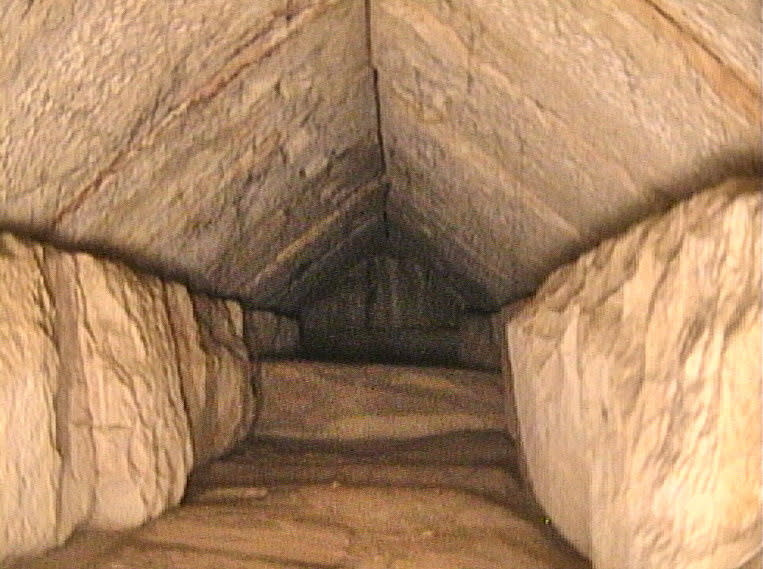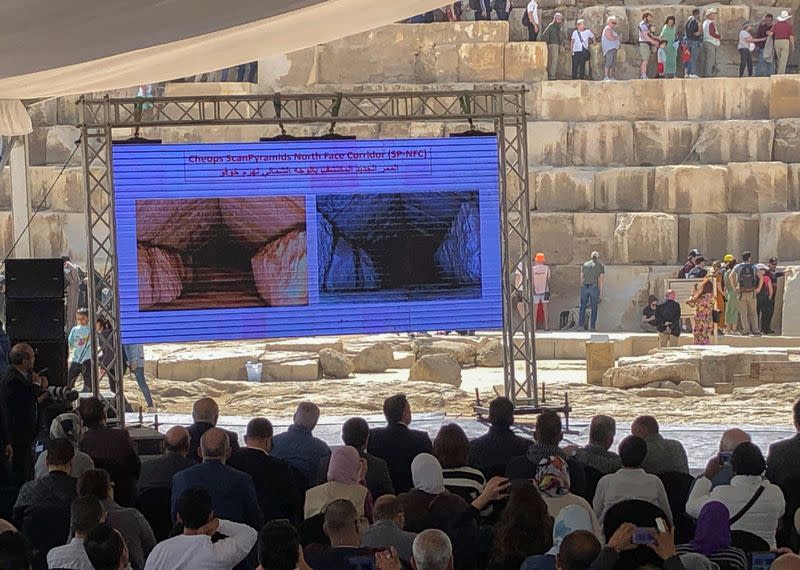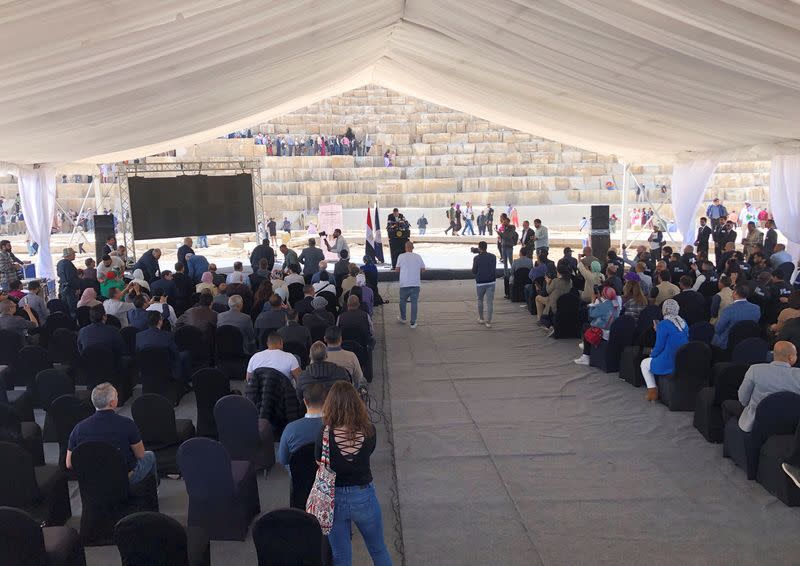Scientists reveal hidden corridor in Great Pyramid of Giza
- Oops!Something went wrong.Please try again later.
- Oops!Something went wrong.Please try again later.
(This March 2 story has been corrected to delete height comparison in paragraph 4)
By Aidan Lewis
CAIRO (Reuters) - A hidden corridor nine metres (30 feet) long has been discovered close to the main entrance of the 4,500-year-old Great Pyramid of Giza, and this could lead to further findings, Egyptian antiquities officials said on Thursday.
The discovery within the pyramid, the last of the Seven Wonders of the Ancient World still standing, was made under the Scan Pyramids project that since 2015 has been using non-invasive technology including infrared thermography, 3D simulations and cosmic-ray imaging to peer inside the structure.
An article published in the journal Nature on Thursday said the discovery could contribute to knowledge about the construction of the pyramid and the purpose of a gabled limestone structure that sits in front of the corridor.
The Great Pyramid was constructed as a monumental tomb around 2560 BC during the reign of the Pharaoh Khufu, or Cheops, to a height of 146 metres (479 feet). With much of its white limestone casing removed, it now stands at 139 metres.
The unfinished corridor was likely created to redistribute the pyramid's weight around either the main entrance now used by tourists, almost seven metres away, or around another as yet undiscovered chamber or space, said Mostafa Waziri, head of Egypt's Supreme Council of Antiquities.
"We're going to continue our scanning so we will see what we can do ... to figure out what we can find out beneath it, or just by the end of this corridor," he told reporters after a press conference in front of the pyramid.
Five rooms atop the king's burial chamber in another part of the pyramid are also thought to have been built to redistribute the weight of the massive structure. It was possible the pharaoh had more than one burial chamber, Waziri added.
Scientists detected the corridor through cosmic-ray muon radiography, before retrieving images of it by feeding a 6mm-thick endoscope from Japan through a tiny joint in the pyramid's stones.
In 2017, Scan Pyramids researchers announced the discovery of a void at least 30 metres long inside the Great Pyramid, the first major inner structure found since the 19th century.
(Reporting by Aidan Lewis; editing by Mark Heinrich)



